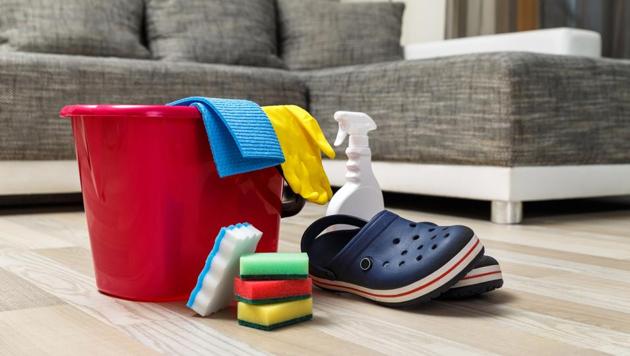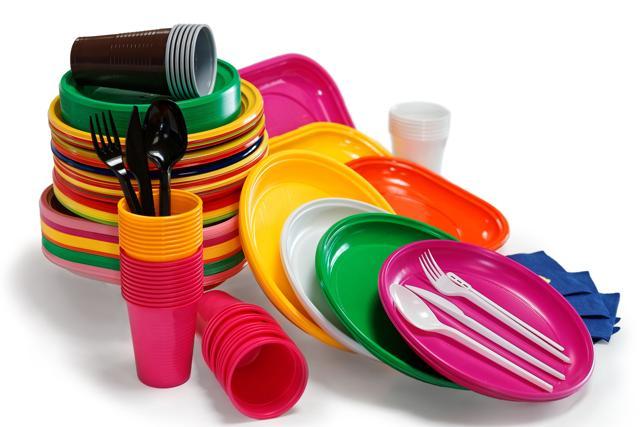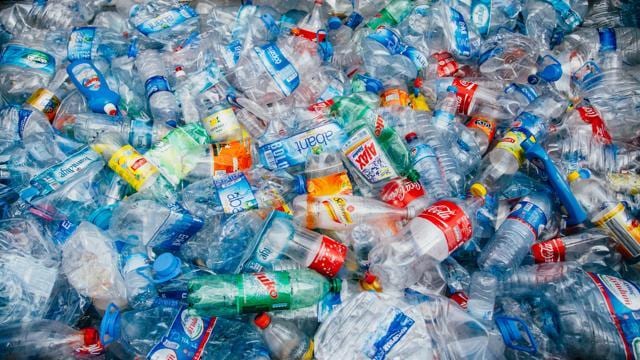Plastic pile-up: What was life like before plastic was invented and how did it become so much a part of our lives?
Little by little, ever since it was invented, this man-made ‘wonder’ has found its way into most of the things around us. HT looks back at the pre-plastic era and draws up a timeline of our growing dependency on plastic
The first time that writer-academic Nabaneeta Dev Sen consciously remembers using plastic was when she bought a set of unbreakable melamine crockery sometime in 1959-60. “We were staying in the US at the time and while I would cook, my husband [she was married to Nobel Laureate Amartya Sen at the time] would do the dishes,” she says. “But he would end up breaking a lot of them, so someone suggested that I try melamine.”

Back then melamine was yet to arrive in India – it became fashionable in the country sometime in the late 1980s-early 1990s – but the plastic manufacturing industry, of which melamine is a part, had already made a start here in 1957 with polystyrene, a hard, transparent kind of plastic.
The dictionary defines plastic as “a synthetic material that can be moulded into shape while soft, and then set into a rigid or slightly elastic form.” It has many variants, depending on the kind of polymer from which it is made.
Recently, of course, the only kinds of plastic that have been in the news globally and have been giving environmentalists sleepless nights are the thin, single-use shopping bags and water and cold drink bottles that are indiscriminately discarded by users. They take up landfill spaces, enter water bodies and in the process of degrading, release toxic chemicals which mix with the soil and water and are a threat to life and environment.
In June this year, Maharashtra banned the manufacture, use, sale and distribution of plastic bags, disposable plastic items such as cups, plates and spoons, plastic sheets to wrap or store products, disposable plastic containers and polyethylene terephthalate (PET) bottles. In July, Uttar Pradesh banned plastic bags measuring under 50 micron in thickness (or in layman’s language, the plastic packets in which we bring in our vegetables and groceries) and other single-use plastic items, such as cups. Many other states have also imposed a partial or complete ban on single-use plastic. In Delhi, the administration has blamed randomly disposed plastic (packets and bottles) for clogging the city’s drainage system and causing waterlogging during the monsoon.
India is not alone to wage war against plastic. Around the same time that Maharastra and UP banned single-use plastic, supermarkets in Australia were trying to make plastic carry bags chargeable. (At least one chain backed down after protest from consumers). According to a UN site, Bangladesh became the first country to ban the use of thin plastic bags in 2002. Other countries followed. But is it possible to do away with plastic altogether, and do we even remember what life was like before plastic?
The Back Story
“The first man-made plastic was created by Alexander Parkes who exhibited it at the 1862 Great International Exhibition in London,” says BP Patra of the Central Institute of Plastics Engineering and Technology. Named Parkesine, this was the predecessor of celluloid, which was created by John Wesley Hyatt a few years later. In 1880, cellulose nitrate replaced horn as the preferred material for combs. Another early plastic was Bakelite, the first to be created completely from synthetic materials. Made from phenol and formaldehyde, it was invented in 1907 by Leo Hendrik Baekeland.
So fascinating did this man-made wonder seem back then that it is said that in 1915 when Queen Mary of Britain saw products made from casein plastic (derived from milk) at the British Industries Fair, she ordered several pieces of jewellery to be made from it. In 1916, when Rolls Royce began to use phenol formaldehyde (a kind of synthetic polymer) in its car interiors, it was something for the premium automobile company to boast of. And every day, the list of items being produced from plastic was increasing.
In 1926, Harrods hosted the first display of coloured thermosetting plastic tableware, the first toothbrush with nylon tufts was manufactured in 1938, and a couple or so decades later, in the 1960s, the plastic T-shirt bag – the humble and ubiquitous carrier of all our vegetables, grocery, meat and other necessities from the market – was invented by Swedish engineer Sten Gustaf Thulin. Today, from medicine, to arms and ammunition, construction, automobiles, attire and packaging, plastic, in some form or the other, and in varying
proportions, is present in every item of daily use.
The India Narrative
“When plastic entered the mass market in India in the 1960-70s as the preferred material for everyday consumer goods, it was a powerful and tangible sign of modernity,” explains social commentator and marketing professional Santosh Desai. “It was durable, light, colourful and cheaper than the materials it replaced, thus giving people the ability to buy more. There was an almost child-like pleasure in its shiny, colourful, brightness,” adds Desai.
Some of the first plastic products to be made in India were tableware, crockery and other items of household use, says Deepak Ballani of the All India Plastic Manufacturers’ Association. “Brite was one of the first brands. They made all things plastic,” remembers advertising guru Prahlad Kakkar.

Gradually, the heavy iron or aluminium pails in bathrooms gave way to plastic buckets and mugs. On the dining table, plastic crockery replaced steel or breakable glass and chinaware and kitchen cabinets were filled with plastic containers. At roadside tea stalls, earthen kulhars changed to cheap plastic cups. “The wooden toys that I had been so fond of became increasingly difficult to find and were replaced with plastic toys. The coconut choir or cloth ropes that were used to hang the washing changed into plastic clotheslines and wooden clothes pegs were replaced with plastic ones – they didn’t get wet when wet clothes were put out to dry,” says Sen.
For the ordinary consumer, it is difficult to remember the years when each item was introduced, and when it replaced something that had been in use before. Even the industry doesn’t have a detailed documented timeline. It suddenly seemed that life was all plastic, as nature lost out to the man-made in all things utilitarian.
In furniture, one of the first brands to use plastic in India was Neel Kamal. There were less plastic-y looking items too: the easy-to-maintain sarees that defined sexy in the 1980s – Vimal and Garden Vareli – were made of synthetic polymer, as were the terylene and terycot shirts and trousers. Cheaper and easier to maintain, they sounded – for a while – the death knell for natural fabrics. Synthetic fabrics also lent themselves more easily to fashion, as Kakkar recalls. “Terycot came to Bollywood, and was therefore copied by the common people, around the same time that bellbottom trousers became the rage. It didn’t look as good in cotton,” he says.
PE (Polyethylene) bottles started getting used for packing household liquids sometime in the 1970s, says Ballani. Interior designer Sunita Kohli’s cleary remembers the way milk was bought in the pre-plastic era - in glass bottles or delivered fresh at home by the milk man. This later changed to plastic packets of milk. Today many of us buy milk in plastic-lined cartons from the supermarket.
The first plastic item that Kohli remembers using in India were the disposable plastic bottles of mineral water on road trips. “Cold drinks, though, still came in glass bottles,” she remembers. Incidentally, packaged drinking water was first introduced in India by the Italian-brand Bisleri in the 1960s in glass bottles, but failed to impress the price-sensitive Indian. When it was re-launched in the 1990s, plastic bottles replaced the glass ones. As for the glass cold drink bottles, there were still separate crates at all shops where the used bottles had to be deposited, to be recycled. PET cold drink bottles became popular in India in the early 2000s, says Ballani.
There were other changes, as almost every industry took up the use of synthetic polymer – packaging, bags and suitcases, furniture laminates, washable plastic wall paints, pipes and drainage system, electrical appliances and switches, disposable syringes, and of course nylon and plastic bucket bags that replaced cotton and jute ones and gave way, in turn, to the thin disposable packets that we see today. Though inexpensive, Desai says plastic wasn’t looked down upon as ‘cheap’.
Opinion differs, however. “I would never use melamine dishes when we had guests,” says Sen. There are other plastic items that she never took to – plastic shoes, marketed as monsoon shoes by most brands. “ We would only buy glass water bottles and stainless steel tiffin boxes for the children to take to school. Plastic was only allowed in things like scales and pencil boxes. Plastic was a no-no in my mother’s house. She wouldn’t allow plastic buckets in the bathrooms or plastic crockery on the table,” adds Sen.
Moulding The Future
As many avatars of plastic or synthetic, man-made items became commonplace, there was rising concern about littering and environmental hazards. This signalled a return to nature – at least among some people. Natural textiles, jute and cotton bags are all back in fashion. The fear of leaching, especially when exposed to heat, as in the microwave, has also started making many consumers switch back to glass over plastic crockery and containers. But given plastic’s penetration in our lives, is it possible to do away with it altogether?
For Kohli, the answer is yes. “Other materials were being used before plastic. We just need to go back...cast-iron and copper pipes, for example, to replace plastic sanitary pipes”. Not everyone agrees with Kohli though. The use of plastic became popular not because it was associated with pride, wealth or good fortune but for its technical benefits and superiority over other alternatives, says Ballani. “It has helped in the agricultural sector, is used extensively in the automobile industry.”

Ashish Jain of the Indian Pollution Control Association (IPCA) insists that instead of spending the next 20 years looking for alternatives to plastic, the focus should rather be on policy changes that help address the problems associated with the use of plastic. “There needs to be collection at source so that there is no littering. And then it needs to be recycled,” says Jain.
Ironically, ‘use and throw’ – especially in bottles and packets – was used to promote the use of plastic in the initial years. But when the consumer throws away a plastic object, it needs to be picked up and recycled. A 2018 report by The Energy and Resources Institute (TERI) cites Central Pollution Control Board findings that plastic forms eight per cent of the solid waste generated in the country. The report also has other interesting stats – in India, 0.60 million tonnes of plastic waste end up in the sea annually; 94 per cent of plastic waste generated is recyclable.
Patra adds: “Recycling plastic helps save energy and natural resources as these are the main ingredients for making virgin plastic.”
The new generation has already taken up the task. “Our school-going grandson, Zohravar, along with a Doon School friend, Ishaan, is involved in using discarded plastic bottles and construction waste to make low-cost toilets,” says Kohli.
Research is on to use discarded plastic to generate electricity. Also, while there are laws banning the use of certain kinds of plastic, these need to be implemented more rigidly.
“Plastic was supposed to be the wonder product of the 20th century, but the toxic waste created by it is has been dangerous,” Patra says. According to the TERI report, the average per capita consumption of plastic in India was about 11 kg in 2014-15, compared to the global average of 28 kg. But it is on the rise.
“If you look at the soil on the sides of roads today, even if you dig up a few layers you find bits of plastic mixed with the mud. It has become so much a part of the soil, it seems like it was always there,” says Kolkata-based writer Alka Saraogi. The same is true about its presence in our lives.
Sources: British Plastics Federation Timeline; All India Plastic Manufacturers’ Association and Central Institute of Plastics Engineering and Technology







